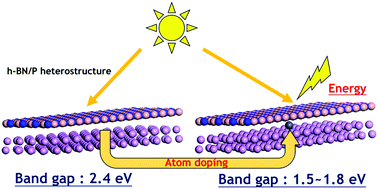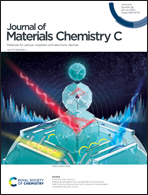Transition of wide-band gap semiconductor h-BN(BN)/P heterostructure via single-atom-embedding†
Abstract
The band gap transitions in boron nitride/phosphorene (h-BN/P) heterostructures are investigated by single-atom-embedding via first principles calculations. In particular, single-atom-embedded heterostructures are designed by embedding 10 different single atoms between the h-BN/P bilayers to compare the transition of properties against the pure h-BN/P heterostructure. Thermodynamic evaluation reveals that the embedded atom plays an important role in the stability of heterostructure formation; as a result, Na, Pd and Pt embedded heterostructures are energetically stable. The stable Na, Pd and Pt embedded h-BN(BN)/P heterostructures are subsequently evaluated in terms of their electronic structures for comparison with the pure h-BN(BN)/P heterostructure. The band gaps of the Na, Pd and Pt embedded heterostructures are revealed to be lower (1.5–1.8 eV) than the wide band gap of the pure h-BN/P heterostructure (= 2.425 eV) by GLLB-sc functional calculations. Novel band gap engineering of h-BN/P heterostructures is revealed through single atom doping, transforming them into promising photoelectric materials for solar energy conversion devices.



 Please wait while we load your content...
Please wait while we load your content...
